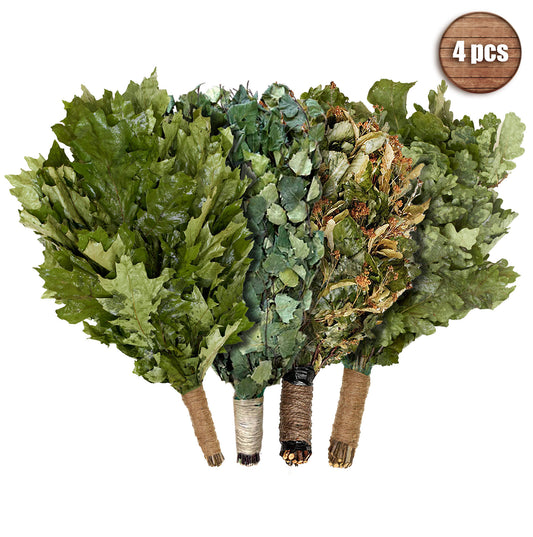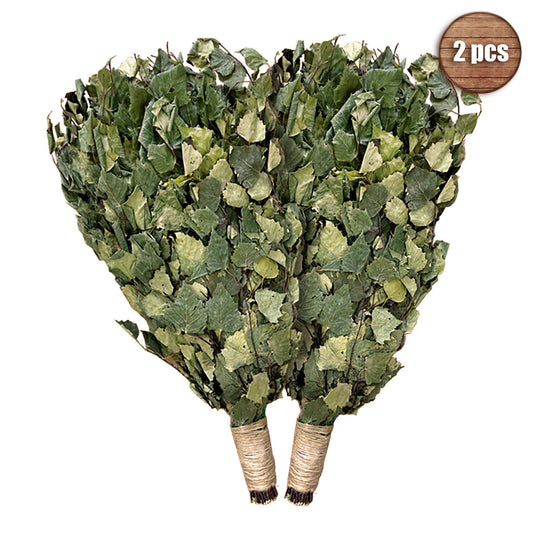
Historic Traditions of Sauna Accessories
Share
Saunas have long been an essential part of cultural life in various regions of the world, particularly in Northern Europe. When we talk about sauna culture, many people naturally think of Finland, often hailed as the birthplace of the modern sauna experience. However, the use of heat baths and accompanying items has a history that transcends just one country. People across Russia, the Baltic nations, Scandinavia, and elsewhere have embraced saunas for both relaxation and ritual. This article takes a closer look at the historic traditions of sauna accessories, how they have evolved, and why they continue to hold significance in contemporary sauna practices.
Cultural Significance of Sauna Accessories
Sauna accessories are not merely functional items; they are also deeply rooted in cultural identity. Different groups developed traditions and techniques, imbuing objects like sauna hats, ladles, and whisks with symbolic meaning. Accessories could be given as gifts, passed down through families, or handcrafted as part of community building.
In Finland, the iconic sauna whisk (vihta) stands out as an indispensable accessory. Traditionally, it was made during midsummer when birch leaves were plentiful and supple. The aroma of fresh birch leaves was believed to have therapeutic benefits, and using the whisk in the sauna released those natural essences into the hot air. Beyond practicality, such items reinforced communal bonds. Families and friends often gathered to craft these whisks together, thus preserving knowledge of plant care and proper preparation.
Over in Sweden, the sauna tradition (bastu) might include subtle differences in terms of design and accessories, but the spirit of communal enjoyment remains the same. In each culture, simple tools—like wooden ladles for sprinkling water over hot rocks—carried with them a sense of heritage. Each splash of water was more than just an act of adding steam; it was a reaffirmation of tradition.
Evolution of Materials and Design
In the past, sauna accessories were largely made from local materials. Wood, in particular, was the favorite due to its availability and natural insulating properties. Birch, oak, cedar, and pine were commonly used, each bringing its own scent and feel to the sauna environment. Metal components—like forged iron hooks or hinges—were sometimes incorporated, but the majority of early sauna accessories remained wooden for comfort and cultural reasons.
With time, modern materials such as stainless steel, bamboo, heat-resistant plastics, and even silicon began to emerge in the realm of sauna accessories. Acknowledging the fundamental importance of tradition, many manufacturers still honor the old designs, but they combine them with modern twists for practicality, durability, and aesthetic appeal. This intersection of the old and new ensures that the centuries-long story of sauna accessories continues to evolve without losing its roots.
Key Traditional Sauna Accessories
Below is a list outlining some of the most iconic historic sauna accessories, many of which remain popular today:
- Sauna Whisk (Vihta/Vasta/Venik): Often made from birch branches and leaves, it is used for gently patting the skin, believed to help open pores and enhance circulation.
- Wooden Bucket and Ladle: Essential for pouring water onto the hot stones to create steam. Traditionally carved out of a single block of wood or assembled from wooden staves.
- Sauna Hat: In regions like Russia, felt hats are worn to protect the head from extreme heat and reduce the risk of dehydration or overheating.
Rituals and Practices Across Regions
Every sauna-going community has its own distinctive traditions. In Finnish culture, a sauna visit is often accompanied by a gentle, soothing silence or quiet conversation, while in a Russian banya, robust discussions or group activities might be more common. Yet both cultures share a fundamental respect for the sauna’s role as a communal and wellness-focused space.
1. Finnish Sauna Traditions
- Tending the fire before entering the sauna.
- Crafting and drying birch whisks (vihta) during midsummer.
- Observing quiet relaxation or heartfelt conversations.
2. Russian Banya Customs
- Using venik (birch, oak, or eucalyptus) for body stimulation and aromatherapy.
- Engaging in platza (whisking) sessions, which alternate with cold plunges or resting in a lounge area.
- Socializing through shared meals or tea breaks in between heat sessions.
3. Baltic and Nordic Variations
- Regional preferences in whisk materials (juniper, nettles, or linden leaves).
- Use of different essential oils and herbs for steam infusion.
- Collective singing or chanting in some local traditions.
Modern-Day Adaptations
Contemporary sauna enthusiasts have started incorporating additional items and innovations, but many still gravitate toward the tried-and-true accessories. The rise of global health and wellness trends has also played a significant role in popularizing sauna rituals across the world. While some prefer high-end, minimalist designs with sleek materials, others take pride in preserving the rustic look and feel that hearkens back to older traditions.
Nowadays, you might find accessories such as digital thermometers, essential oil diffusers, and ergonomic headrests that claim to improve the sauna experience. Nevertheless, these modern developments coexist with classic wooden buckets, ladles, and handmade sauna whisks. As technology advances, the challenge remains to integrate convenience without overshadowing the deep cultural significance that sauna accessories bring.
Three Points of Value in Traditional Sauna Accessories
Despite the availability of modern innovations, there are compelling reasons to stick with or at least integrate certain traditional sauna accessories. Here is a brief list detailing some of these values:
- Cultural Continuity: Using historic accessories connects you directly to the traditions and practices of generations past.
- Holistic Experience: Natural materials and age-old methods can create a deeper, more immersive ambiance.
- Sustainability: Handcrafted wooden items and locally sourced materials often have a lower environmental impact than factory-made, synthetic options.
Choosing the Right Sauna Accessories for You
With the current global popularity of sauna culture, a vast array of sauna accessories is available for purchase or even DIY crafting. Whether you value authenticity, modern convenience, or a balance of both, these factors can guide your selection:
1. Material Preference
- Wooden products (birch, cedar, pine) for traditional warmth and natural insulation.
- Modern materials (stainless steel, silicone) for durability and easy cleaning.
2. Cultural Connection
- Opt for historically significant items like the Finnish vihta or a Russian venik if you wish to experience a more traditional sauna ambiance.
- Explore region-specific herbs or essential oils for a customized aromatic experience.
3. Practical Considerations
- Ensure safety by using items specifically designed for high-heat environments.
- Consider your sauna’s size and capacity—some accessories might be too bulky or unsuitable for smaller saunas.
- Balance style with functionality: If you want an elegant aesthetic, look for designs that complement your sauna’s overall look without sacrificing practicality.
Final Thoughts
As saunas spread in popularity across the globe, the traditions surrounding sauna accessories have likewise transcended their regional origins. Today, you can find enthusiasts in urban centers from Tokyo to Toronto, all eager to replicate the authentic charm of Finnish, Russian, or other regional sauna practices. While modern manufacturing offers an abundance of new options, the heartbeat of sauna culture often lies in the old, familiar objects that tell stories of centuries past.
For anyone seeking to enrich their sauna experience, it might be worth exploring the historical background and significance of sauna accessories. From handcrafted wooden buckets to aromatic sauna whisks, these items offer far more than mere functionality. They represent continuity between past and present, connecting us to the generations who found solace, healing, and community around the warmth of a shared steam.





